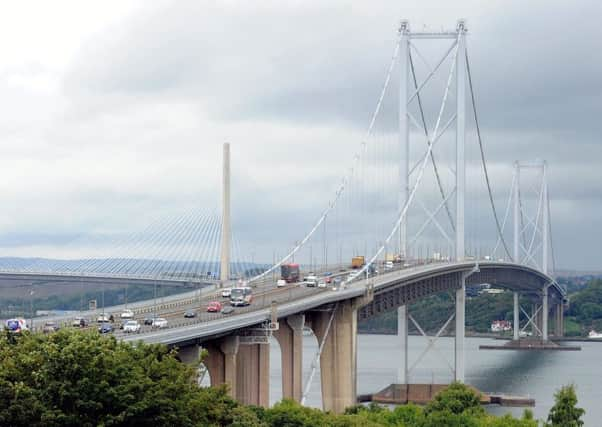David Alexander: New crossing makes Queensferry a key player
This article contains affiliate links. We may earn a small commission on items purchased through this article, but that does not affect our editorial judgement.


Despite inclement weather the ceremony appeared to have been a great success and the country seems to have moved on from the controversy that originally surrounded the project: i.e. whether it was necessary in the first place and that strengthening the original road bridge might have been the more cost-effective option.
Advertisement
Hide AdAdvertisement
Hide AdAlthough architectural opinion can only be subjective there seems to be a common agreement that the design of the Queensferry Crossing is strikingly impressive and as well as serving a useful purpose will be a symbolic landmark for decades to come.
The property sector likes things like this because it can feed off positive symbolisms which hint at technological and aesthetic progress and confidence in the future. Consequently, if I was a small private investor looking for opportunities in locations that I had not previously considered, then I would be tempted to give some thought to Queensferry (not South Queensferry as this former royal burgh is often mistakenly referred to).
Most visitors to the town experience only the traditional, cobbled high street and the promenade, from where they can view not just two but now three iconic bridges spanning three centuries. But hidden behind this, high on a ridge, a large programme of private sector house-building is taking place. Local government reorganisation in 1975 took Queensferry out of West Lothian and into the Edinburgh municipal boundary; up to now it has retained a certain cache of being in the city but not of it but that appears to be changing. The current and planned new-build is certainly not there simply to satisfy the immediate local market and Queensferry is increasingly seen as an attractive option for starting or growing a family for people who want to continue to have an Edinburgh address but have struggled to find suitable new-build closer to the city proper.
Apart from its aesthetic and environmental attributes – which the new Crossing will only enhance – Queensferry has pulling power for the commuter. Once teething troubles are sorted out, the new approach should improve access to the M8 and with it to Livingston and the Lanarkshire business parks further west.
Here, as in similar circumstances elsewhere, there have been local objections. Some people consider the green belt sacrosanct or on a more personal level simply do not wish to have the view of fields or woodland from their kitchen window obscured by more housing (although few would admit it). However there does seem to be more practical concerns within the local community – for example, that additional health, education and other public facilities should be developed in tandem with new housing rather than having a “wait and see” approach.
Nevertheless the bottom line is that Edinburgh desperately requires to meet the demand for more “front and back door” housing and if people cannot obtain it within the city boundary they will simply look further afield and commute longer distances, often by car – so how green is that?
The old adage says that three things make a successful property development: “location, location, location”. But the term was coined more than 90 years ago and the world has moved on. Location is, of course, still crucial but investors may increasingly have to take into account other factors – for example, access, environment, politics and the strength of local nimbyism/concern for the green belt (delete according to one’s point of view). Which means considering Queensferry and other areas that, up to now, may have not ticked the investor box.
• David Alexander is managing director of DJ Alexander, letting and estate agents